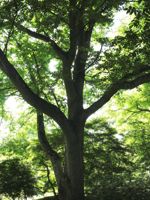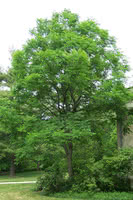Mon-Fri 9am - 5pm Mountain time
Manchurian Walnut vs Kentucky Coffeetree
Juglans mandshurica
Gymnocladus dioicus
NOT AVAILABLE THIS SEASON - MIGHT RETURN
NOT AVAILABLE THIS SEASON - MIGHT RETURN
Manchurian Walnut is a large, broad and often multi-stemmed tree with ornamental qualities. This tree produces large, thick-shelled nuts that ripen in the fall. These edible walnuts are reportedly difficult to crack open. They are useful for attracting wildlife, especially squirrels.
The Manchurian Walnut contains and exudes much lesser quantities of allelopathic compounds, such as juglone (common to walnuts), that may prevent or impair growth of nearby plants. Therefore, it is commonly embraced as a safe walnut to plant.
There are reports of rare this species surviving winters to -45C with specimens growing and thriving in Alaska and Edmonton.
There is no regular supply of this species. It is rare and not produced each year.
The Kentucky Coffeetree has the largest leaves of any native tree in North America! In the summer, its large green canopy provides shade. While in the winter, its leathery bean pods act as a decorative element against the sky as they rattle in the wind. Beautiful year-round, this tree is an elegant addition to any landscape.
Manchurian Walnut Quick Facts
Kentucky Coffeetree Quick Facts
Toxicity: Uncooked pods are toxic to humans

